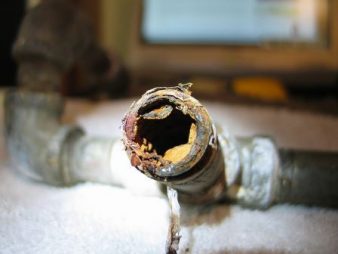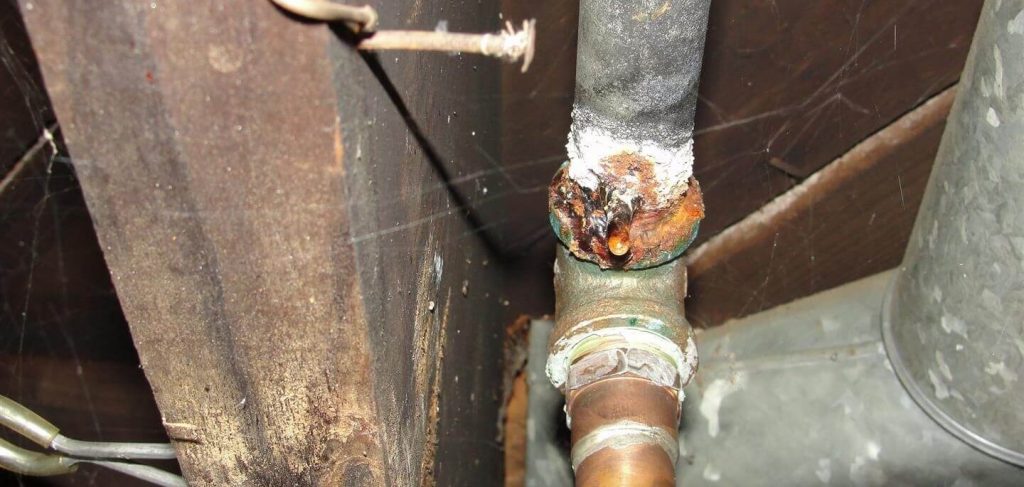Will my home insurance cover water damage from burst plumbing?
Typically, home insurance policies include coverage for any sudden or accidental escape of water in your home, including ruptured water lines, or overflowing appliances. This is why insurance companies ask what type of plumbing you have in your home. They need to be able to accurately assess the risk in order to charge the right rates and provide you with the right coverage. Sometimes, depending on your plumbing situation, a company may not be able to insure you at all, and you’ll need to shop around, and likely pay a higher rate, if you can find coverage at all.
Don’t let this tempt you to tell a little white lie to your insurance broker. This can be construed as “misrepresentation” and can void your policy when it is discovered. Your best course is to always tell the truth. If you discover that the only solution is to replace your plumbing, the expense will be a lot less than finding out, after a loss, that you have no insurance coverage.
When you have a home insurance policy in place, remember that there are always exclusions and limitations. It is extremely important to read your policy wording, with an emphasis on any water exclusions. You can contact your insurance agent or broker if you have any questions. In most cases, there is a requirement that you either shut off your main water supply or arrange to have your home checked daily if you are going to be away more than a few days during the winter. If you fail to do this, damage caused by frozen or burst plumbing may not be covered. The requirements differ from one company to the next, so before you go away on vacation, you would be wise to give your broker a call to make sure you’re complying, and that coverage will be in place.
Other tips to prevent water damage inside your home
Know your home’s plumbing system
Know exactly what type of plumbing you have, especially if your home is older. Life expectancies vary, and as mentioned above, your insurance company will want an accurate picture of the risk they’re taking on. If your plumbing is past its “best before” date, you could be at risk of leaks, or even worse, bursting pipes.
Check the bathroom
Check the grout in your bathroom. Water can leak through any small cracks, resulting in dampness behind the wall. This can lead to rot or mold, which is never a good thing.
Install a leak detecton system
Think about installing a leak protection device on your plumbing system. Some of these can actually shut off the water when it senses an inappropriate flow.
Water in the basement?
Scout out any water in the basement after a big rain. If you see water anywhere, it could be because your foundation has some small cracks. You may need to make some repairs, or it could be time to install a sump pump. Maybe your window wells aren’t draining properly, and water has come in through the basement windows. This can be a fairly simple fix, so add this to your maintenance checklist.
Check water supply hoses
Check any water supply hoses on your appliances, such as washing machines or dishwashers. They usually come with rubber hoses that get brittle and crack as they get older. These can be replaced with stainless steel braided hoses, even if you haven’t yet spotted any cracks or other signs of wear. Keep in mind that all hoses have a life expectancy, so check with the manufacturer.
Store valuables in a safe place
Store valuable possessions high up on shelves, not in boxes on the floor.
Tips to stop water from coming into your home
- Remove any snow that may have piled up against the side of your house. As it melts, it can seep into your foundation.
- Make sure the ground around your house, slopes away, and not towards, your house. You want water to run away, not to run towards your house (and into your basement).
- Inspect and clean out the gutters around your roof. These can clog, sending water down between your walls. Also, make sure the downspout is directing water away from the foundation.
- Look for missing or worn-out shingles on your roof. Also, see if any flashing is missing or has come loose. Have these repaired before the rainy season hits.
Information sources:
Want to learn more? Visit our Getting to Know Your Home resource centre for the complete rundown on all your home's systems and features. Or, get an online quote in under 5 minutes and find out how affordable personalized home insurance can be.



